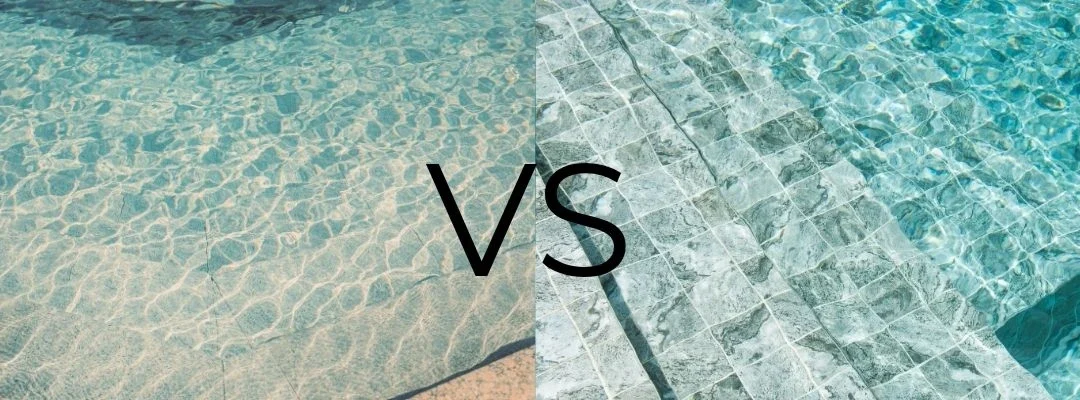Concrete pools are tough, but even they develop issues over time. Cracks, leaks, and drainage issues are some of the most common problems, often made worse by shifting soil, salt exposure, and heavy rain. These issues can lead to water loss, damage to surrounding areas, and expensive ongoing maintenance if left unchecked. A full pool renovation is the ideal time to fix these problems properly, not just apply temporary repairs. This post looks at the most common structural problems resolved during concrete pool renovations and explains when resurfacing alone may be enough to restore the pool’s condition.
Structural Cracks in the Pool Shell
Cracks in the concrete shell are one of the most common structural issues found during pool renovations. Some appear as thin surface lines, while others run deeper and may lead to water loss or long-term damage if left untreated. Even small cracks can worsen over time, especially under pressure from shifting ground or heavy rainfall.
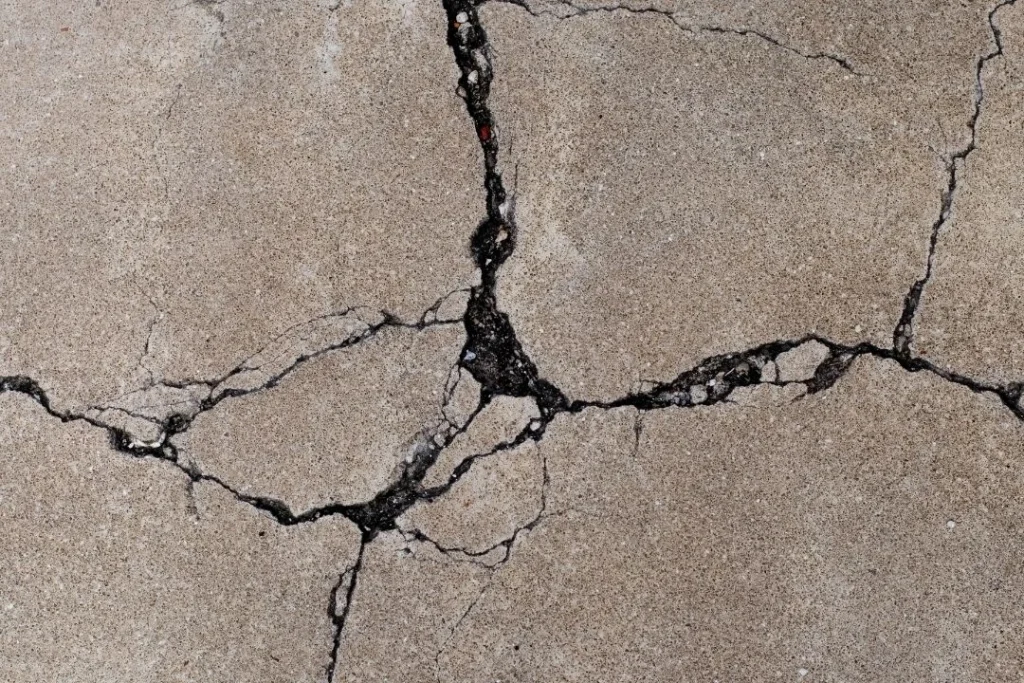
What causes cracks?
- Ground movement, particularly on sloping or unstable soil
- Hydrostatic pressure after intense or prolonged rainfall
- Ageing concrete that has weakened over time
- Poor construction or lack of proper waterproofing
How renovation fixes it:
During renovation, any visible cracks are carefully ground open to expose the full depth of the damage. They’re cleaned out and filled with structural epoxy or a flexible compound that moves with the concrete as conditions shift. For added protection, especially in high-risk areas, a waterproof membrane may be applied across the interior shell before resurfacing. This reinforces the structure and reduces the chance of future cracking or water ingress.
Leaking Pool Shell or Plumbing
A leaking pool can be difficult to diagnose, but expensive to ignore. It’s not always obvious where the leak is coming from. It can be a crack in the shell, deteriorating plumbing, or faulty fittings. Over time, even small leaks can lead to water damage beneath the pool, increased water bills, and ongoing maintenance headaches.
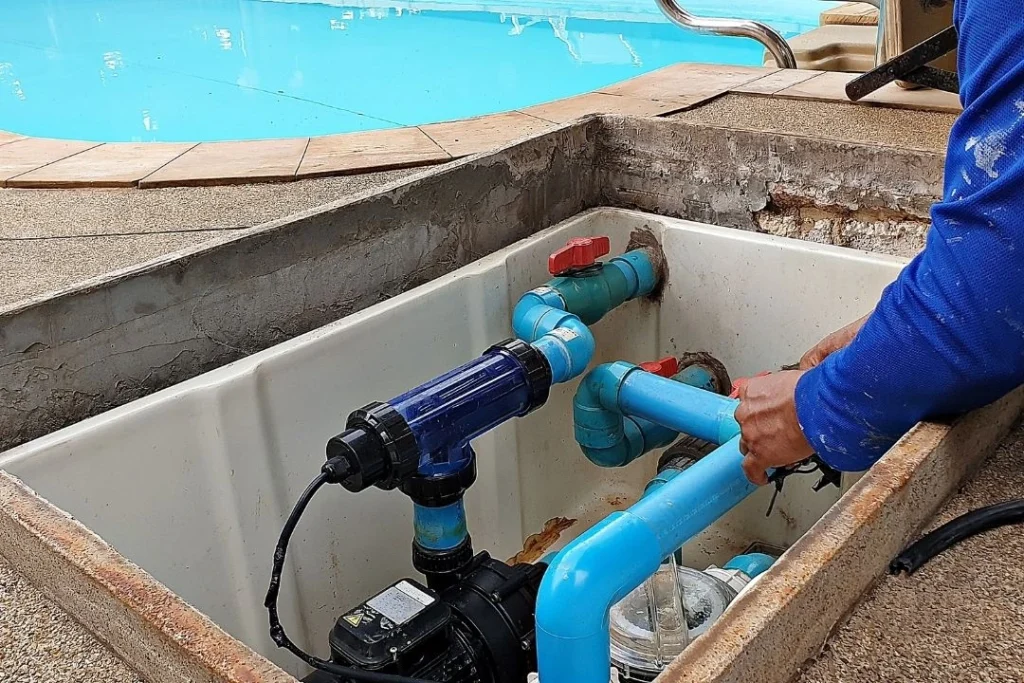
Common causes of leaks:
- Cracks in the concrete shell
- Corroded or broken underground plumbing
- Deteriorated skimmers, return fittings, or light niches
- Failed seals around plumbing or fixtures
How renovation fixes it:
The renovation process typically starts with pressure testing to isolate the exact location of the leak. Once identified, damaged plumbing lines are repaired or replaced, and any compromised fittings are resealed. These repairs are completed before the new interior surface is applied, ensuring the pool is watertight and ready for long-term use.
Poor Drainage Around the Pool
Drainage problems might not start in the pool, but they can seriously affect its structure and the surrounding area. Without proper runoff, water can collect around the shell or paving after rain, weakening the soil and leading to movement, cracks, or damaged finishes. This can also affect nearby landscaping or even the home’s foundation.
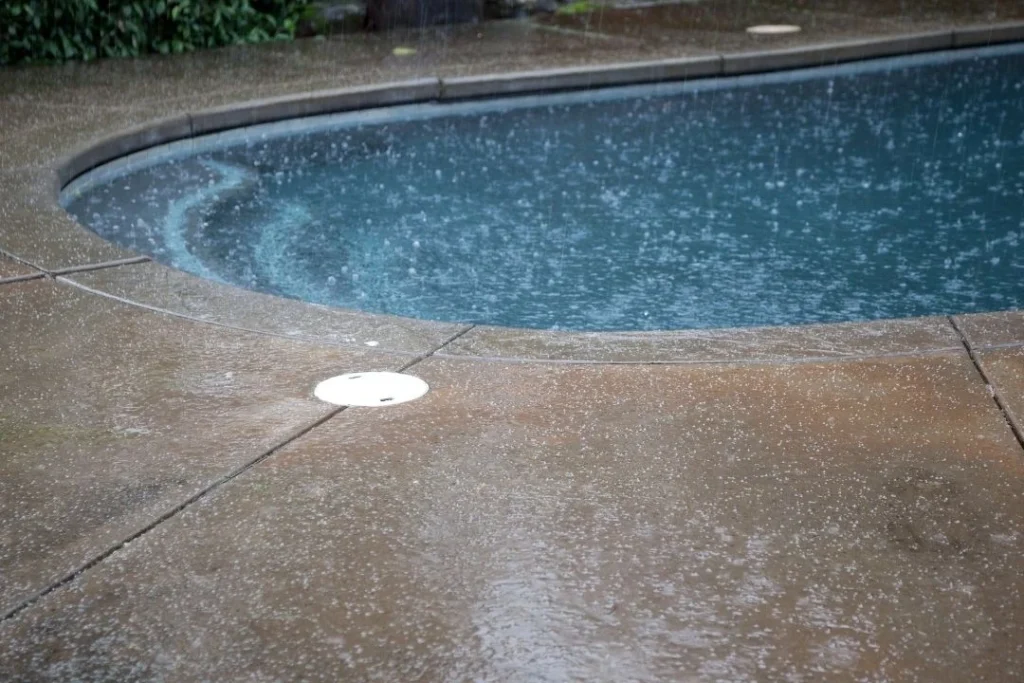
Signs of poor drainage:
- Water pooling near the pool after rain
- Soft, soggy, or uneven ground around the coping or paving
- Pavers that shift, lift, or sink
How a renovation fixes it:
A full renovation creates the opportunity to correct drainage issues properly. The surrounding area can be regraded to direct water away from the pool, and trench drains, sump pits, or overflow systems can be installed or upgraded as needed. These improvements not only protect the pool but also help reduce runoff and manage stormwater more effectively in line with local drainage guidelines. Drainage upgrades are typically integrated into the new pool surrounds, creating a safer, longer-lasting outdoor area.
Can Resurfacing Alone Fix These Issues?
Concrete pool resurfacing is a great way to refresh a pool’s look and feel, but it’s not a cure-all. If the structure is still sound and the plumbing is in good condition, resurfacing can be a cost-effective way to extend the life of the pool without a full renovation.
Resurfacing is only suitable for:
- Minor surface wear or rough textures
- Cosmetic staining or discolouration
- Outdated or faded interior finishes
Resurfacing won’t fix structural cracks, plumbing leaks, or poor drainage around the pool. In cases where these deeper issues are present, resurfacing alone may only offer a temporary improvement. A full renovation allows for proper diagnosis and repair of the underlying problems before a new surface is applied, giving the pool a longer-lasting, more reliable finish.
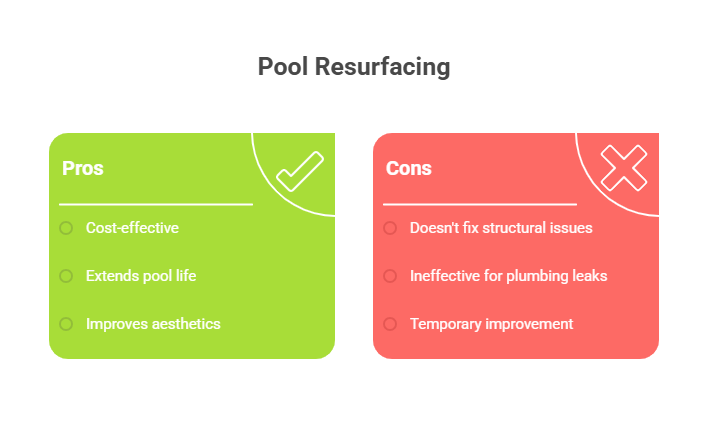
Why Renovation Is the Right Time to Fix Structural Problems
A pool renovation isn’t just about improving the appearance. It’s also the ideal time to address the structural problems that often develop over the years, such as cracks, leaks, and poor drainage. Tackling all these issues during the renovation process ensures they’re properly resolved, which helps avoid repeat repairs and unnecessary costs in the future. It also gives the pool a stronger foundation for any upgrades, so the results last longer. For more information about the pool renovation process, you can check out our blog post: What’s involved in a full pool renovation.
If your concrete pool is showing signs of damage, it’s worth getting it properly assessed. We offer free on-site inspections across the Gold Coast and provide concrete pool resurfacing and full pool renovation services to address structural issues like cracks, leaks, and drainage problems. Our team will walk you through the process and help you plan a renovation that restores your pool’s structure, safety, and long-term performance. Reach out today by calling (07) 5651 0404.


